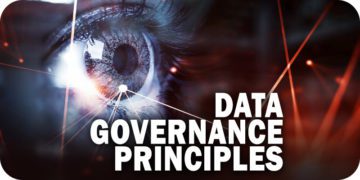Solutions Review editors created this short resource highlighting the most common data lake myths to stand clear of.
In the realm of big data, data lakes have emerged as a popular and powerful solution for storing, processing, and analyzing vast amounts of structured and unstructured data. However, misconceptions and myths surrounding data lakes can impede organizations from fully harnessing their potential. In this article, we aim to debunk some of the greatest data lake myths, providing insights and best practices to help organizations navigate the complexities and unleash the true value of their data lake implementations.
Data Lake Myths
Myth 1: Data Lakes Are Just Data Warehouses in Disguise
One prevalent myth surrounding data lakes is that they are simply data warehouses with a different name. While both data lakes and data warehouses store data, they differ significantly in their architecture, purpose, and flexibility. Unlike traditional data warehouses, data lakes embrace a schema-on-read approach, allowing for the ingestion of raw, unstructured data without predefined schemas. Data lakes are designed to handle diverse data types, enable data exploration and discovery, and support advanced analytics. Understanding the distinctions between data lakes and data warehouses is crucial for leveraging the unique capabilities of each.
Myth 2: Data Lakes Are a Solution for All Data Challenges
Some organizations believe that implementing a data lake will automatically solve all their data-related challenges. However, a data lake is not a silver bullet solution. It is a powerful tool that requires proper planning, governance, and data management practices to be effective. Without appropriate data governance, metadata management, and data quality controls, data lakes can quickly become data swamps, with unorganized and unreliable data. To maximize the benefits of a data lake, organizations must invest in comprehensive data management strategies, including data cataloging, data lineage, and data stewardship.
Myth 3: Data Lakes Lead to Data Chaos and Lack of Control
Another myth is that data lakes promote data chaos and make it difficult to maintain control over data assets. While it is true that data lakes allow for the ingestion of diverse data without rigid structures, proper data governance can ensure control, security, and compliance. Implementing robust metadata management, access controls, and data lineage tracking mechanisms enables organizations to maintain visibility, traceability, and control over data in the data lake. With effective governance practices in place, organizations can strike a balance between data accessibility and data security.
Myth 4: Data Lakes Eliminate the Need for Data Preparation
There is a misconception that data lakes eliminate the need for data preparation or data cleaning processes. In reality, data preparation remains a crucial step in the data pipeline, even within a data lake environment. While data lakes offer flexibility in ingesting raw data, data preparation tasks such as data cleansing, data transformation, and data enrichment are essential for ensuring data quality and usability. Organizations should incorporate data preparation workflows and tools into their data lake strategies to optimize the accuracy and reliability of the data.
Myth 5: Data Lakes Are Only for Data Scientists and Analysts
It is often believed that data lakes are exclusively meant for data scientists and analysts, leaving other business users out of the equation. However, data lakes have the potential to benefit a wide range of stakeholders across the organization. With proper data governance and self-service analytics capabilities, data lakes can empower business users, executives, and decision-makers to explore, query, and derive insights from the data lake. By democratizing data access and fostering a data-driven culture, organizations can unlock the full potential of their data lake investments.
Final Thoughts
Data lakes have revolutionized the way organizations store and analyze data, but misconceptions can hinder their successful adoption and utilization. By dispelling these common myths surrounding data lakes, organizations can embrace the true power of this technology. Understanding the distinctions between data lakes and data warehouses, implementing robust data governance practices, acknowledging the need for data preparation, and expanding the usage of data lakes beyond data scientists and analysts, organizations can optimize their data lake implementations.
It is crucial to approach data lakes with a holistic understanding of their capabilities and limitations. By debunking these myths, organizations can harness the full potential of their data lakes, enabling them to unlock valuable insights, support data-driven decision-making, and drive innovation.
Data lakes have revolutionized the way organizations store, manage, and analyze data. However, misconceptions surrounding data lakes can hinder their successful adoption and utilization. By dispelling these myths and understanding the true capabilities of data lakes, organizations can effectively leverage this powerful tool to maximize the value of their data assets. Through proper planning, governance, data management practices, and democratized data access, organizations can harness the full potential of their data lakes and gain a competitive edge in the data-driven era.
- The 5 Greatest Data Lake Myths and How to Avoid Them - June 30, 2023
- The 5 Greatest Master Data Management Myths and How to Avoid Them - June 30, 2023
- The 5 Greatest Metadata Management Myths and How to Avoid Them - June 30, 2023





